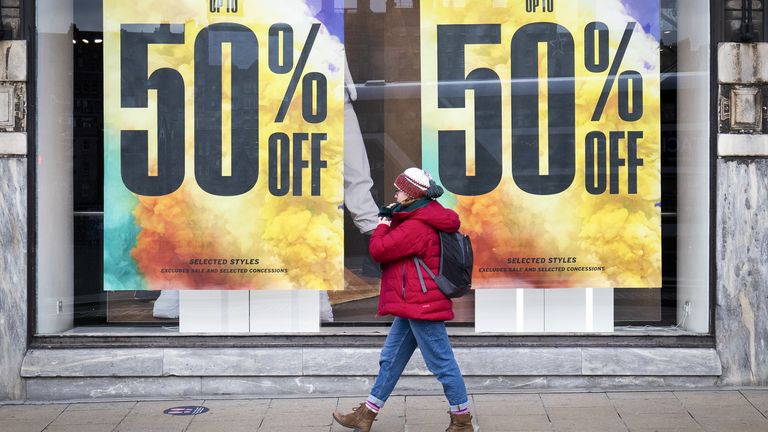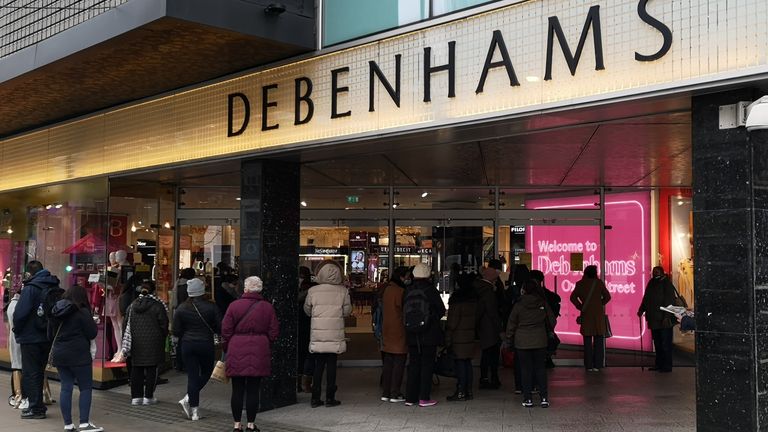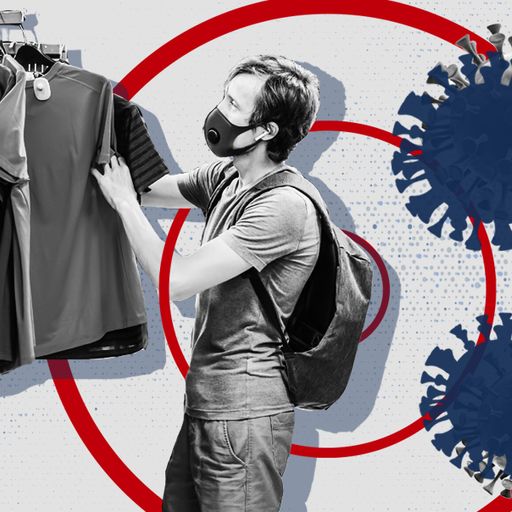The biggest drop in clothing and footwear costs for a decade meant inflation slowed by more than expected in November.
The Office for National Statistics (ONS) said the consumer prices index (CPI) measure of inflation eased to an annual rate of 0.3% in November from 0.7% the previous month. Economists had expected a figure of 0.6%.
It potentially reflected a surge of early Black Friday discounts as the country remained under COVID-19 restrictions in the run-up to Christmas, the ONS said.
Fashion has been among the areas worst hit in the crisis to date as people have been under pressure to remain at home for both work, where possible, and pleasure.
The start of this month saw Sir Philip Green's Arcadia Group and Debenhams collapse within hours, placing 25,000 jobs at risk, though they are continuing to trade for now as buyers are sought.
The ONS reported that lower clothing and footwear costs made the largest contribution to the easing of inflation in November as chains grappled for business both in-store and online.
It said shoppers enjoyed prices which were 3.6% lower than in the same month last year and 2.7% down on October.
Lower prices do not necessarily mean business has boomed as a result and there are fears the UK economy - dependent on consumer spending - could return to contraction in the current final quarter of the year because of renewed lockdown disruption.
However a closely-watched survey of economic activity for early December, which excludes retail, suggested an uptick in growth was evident - driven by stockpiling and export growth among manufacturers ahead of the end of the Brexit transition period.
The IHS Markit/CIPS data, taken from private sector purchasing managers, also marked the steepest rate of manufacturing sector input price inflation for two-and-a-half years.
It signals inflationary pressure on the months ahead, if those costs are passed on.
The latest ONS figures leave inflation close to the almost five-year low of 0.2% struck in August and a long way off the Bank of England's 2% target ahead of its latest interest rate decision on Thursday.
It has been considering whether the pandemic's hit to the economy, coupled with further Brexit disruption, justifies introducing negative interest rates for the first time to stimulate activity.
Economists do not expect it to make such a move yet.






